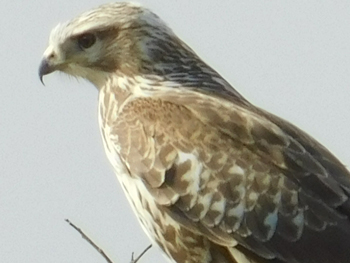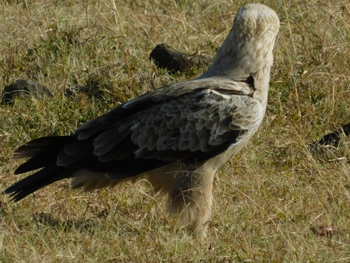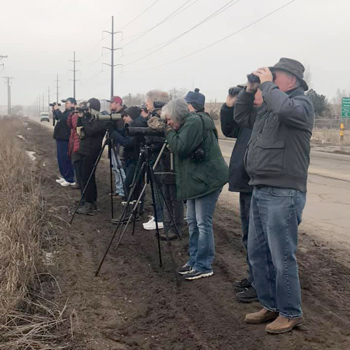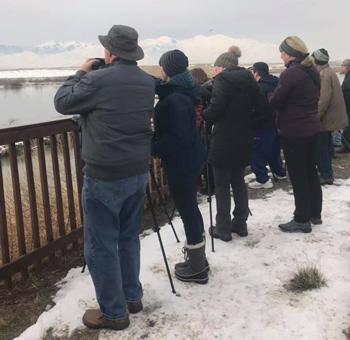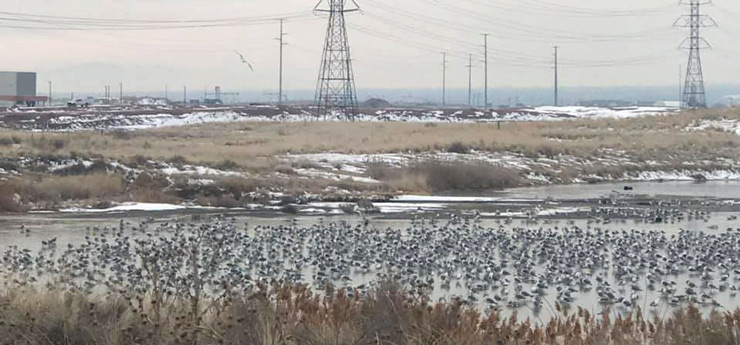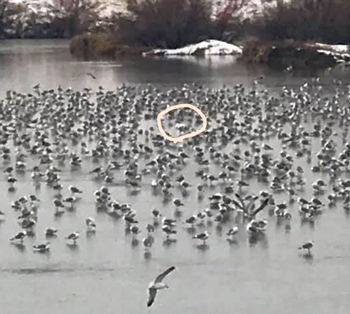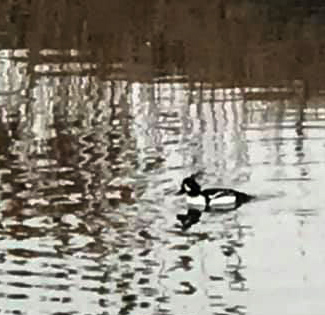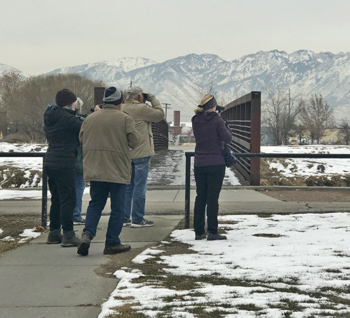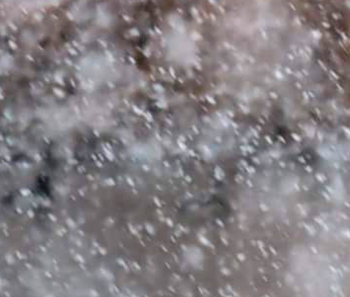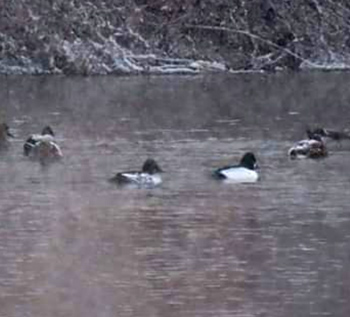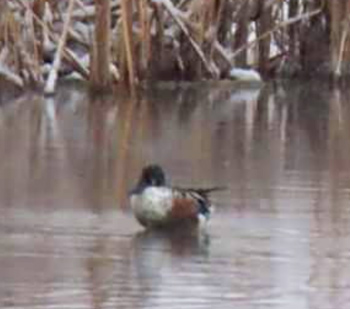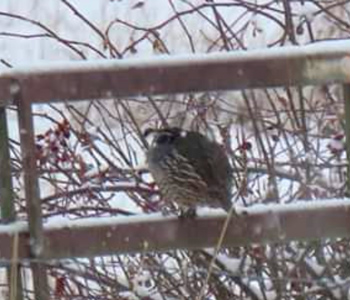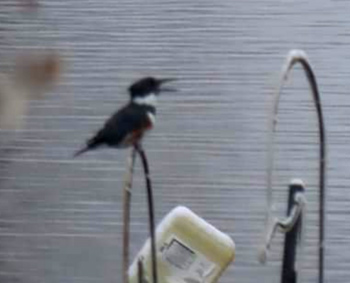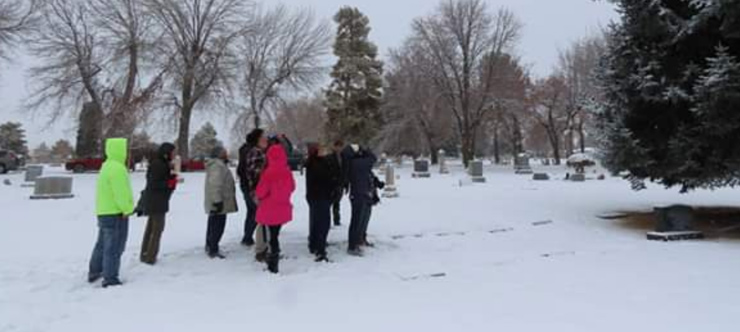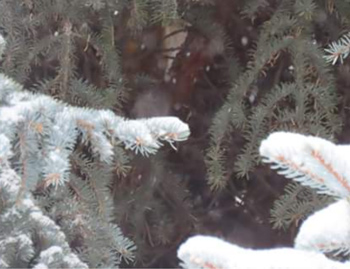|
|
||||||||||||||||||||||||||||||||||||||||||||||||||
Utah County Birders
Newsletter
|
||||||||||||||||||||||||||||||||||||||||||||||||||
 |
Contents
Monthly Meeting
Upcoming Field Trips
President's Message
Bird of the Month
Field Trip Reports
Printable Version
Thursday, February20th, 2020, at 7pm (a different night than usual)
at the
Monte L. Bean Museum on the BYU Campus
Sam Braegger from the Utah Lake Commission will talk about some lake-related topics, Jake Holdaway, with the Walkara Way Conservation Project will give a quick overview and update on that project, and Melissa Stamp, with the Provo River Delta Restoration Project will present updates on that project. If you have questions about what's slated to happen with the Skipper Bay Trail and the restoration area around the mouth of the Provo River, now's your chance to ask them!
Saturday February 1, 2020
Gull Identification Clinic.
Those that sign up are just going to be meeting at the George S. and Delores Dore Eccles Wildliife Education Center at 9:45 am. It starts at 10:00 am. They will have the clinic first then those who want to go on a field trip to Farmington Bay WMA to put their skills to the test! It's a fun outing and really informative! Bring a lunch. Here is the link to sign up
If anyone wants to carpool we can meet at the Pioneer Crossing Park&Ride at 8:30am.
Friday February 21, 2020
Delta Snow Goose Festival.
We will meet at the Payson Walmart NE part of the parking lot close to the new construction of Quick Quack carwash at 8:00 am. We will carpool to Delta looking for birds along the way. We will hopefully get 20 species in a birding day, 20 species in Juab and Millard County., 20 species at a Utah Reservoir, and 20 species in a few cities or towns, and add to our 20 species of waterfowl! Helping complete #2, 4, 12, 13 and 16 for our 2020 challenge. Bring a lunch and plan on being home in the afternoon.
|
President's Message -
February 2020 by Machelle Johnson We
are one month in to our 2020 challenge year, how is your 2020 vision so far??
|
|
The Tawny Eagle
(Aquila rapax)
*Rooferend* Article and Photos by Steve Van Winkle |
|||
|
My scant personal history of these this bird of prey begins in Noboisho Conservancy, Maasi Mara, Kenya where I had the opportunity to volunteer on a Big Cats research project. The conservancy occupies 50,000 + acres consisting of acacia woodlands, scrub, and grassland savannah intertwined with a meager number of seasonal and permanent streams.
The Tawny eagle is a long-lived bird of prey reaching an age of 16+ years in the wild barring threats to survival due to habit loss and subsequent changes in prey-predator ratios, nesting sites and other conflicts associated with human development and occupancy. A more recent and very significant threat that has come under scrutiny is the poisoning of carcasses by poachers. Their method is to make indiscriminate kills of large mammals, lacing the carcasses with poisons and, thus killing any vultures, eagles, and other carrion feeding carnivorous animals that otherwise unharmed might whilst circling attract the attention of anti-poaching ranger teams to illegal kills. Presently the IUCN list the status of the Tawny as Vulnerable.
with an isolated population on the Arabian-peninsula”. It is for the most part a
non-migratory species occupying it territorial expanse throughout its life span.
Description The Tawny eagle was first described by the Dutch naturalist, Conenraad Jacob Temminck in 1828 and at one time considered closely related to the larger migratory Steppe eagle of a similar geographic range. This is though not the largest of eagles belonging to the genus Aquila, boasts an impressive wingspan of 63-75 inches which was quite a site to behold as I was able to witness suring my adventure at Noboisho Conservancy. In Terry Stevenson and John Fanshawe’s excellent field guide “Birds of East Africa” their description describes it as livery dark brown color (from genus name Aquila), to creamy-buff, vaguely streaked and rather scruffy in appearance. Though, as one can easily discern in my photo above there is nothing scruffy in this particular bird’s appearance. In flight the wings are held flat and the tail is broad and rounded. This photo is of an adult Tawny which I will describe. The primary base color throughout is tawny (bronzish to swarthy) broken by streaks and blotches of seashell white. The lores ,chin and a well-defined crescent below the eye are a seashell white. The crown, nape and shoulder are finely streaked with the same gorgeous seashell white. Wave and crest patterns of seashell are present on the primaries, flanks and upper leggings and although not visible a distinct pale buffy rump crescent exists. The gape is short not extending past the middle of the eye.
Habitat-Ecology The Tawny much prefers open, steppe, lightly wooded savannah, high desert and open Pasteur lands where while soaring at significant heights it is able scan the ground and scrub for prey utilizing it’s very keen eye sight. Once honing in on its target, most often small mammals, including hares and rodents, birds as large as guinea fowl and partridge, snakes and lizards it plunges downward and at the last moment thrusts its forelegs forward snatching its prey with deadly force and grip of talons. “It also has the innate habit to assail smaller raptors or other carnivorous birds, stealing them their just secured prey”, as witnessed by many observers and described by Dr. Colombo. The Bateleur eagle that we often saw in Noboisho conservancy region, is often the candidate for this particular behavior exhibited by the Tawny resulting in its colloquial Dutch sobriquet Rooferend meaning robber. The Tawny will feed on the kills of other predators, exhibiting no aversion for carrion.
|
|||
|
|
|||
|
|
|
||
|
20 Jan 2020
Twenty on the Twentieth Field Trip
Photos and text by
Leena Rogers |
|||
| In spite of the freezing cold January weather, our Gulling Field Trip was a great success thanks to Keeli Marvel and Sam Phillips. We birded Lee Kay Ponds, Decker Lake, and Redwood Trailhead Park to locate our 20 birds on the 20th. Fun morning! | |||
|
|
|
||
|
|
|||
|
|
List of the highlights we saw from Keeli Shea Marvel:
Highlights at Lee Kay included 6 gull species: Ring-billed, California,
Herring, Iceland, Glaucous, Lesser black-backed, a Rough-legged Hawk,
|
||
 |
... Canvasback ducks, Green-winged Teal and Common Mergansers at Decker Lake, and several Barrow’s Goldeneye at the Jordan River Trailhead park bridge on the Jordan River | ||
|
|
|
||
| Photos by Leena Rogers | |||
| |
|||
|
|
|
||
|
1 Jan 2020
NEW YEARS DAY FIELD TRIP by Suzi Holt
Are we going? Are we not? Yes we are! 16 birders braved the weather and met at Salem Pond at 8 am. The forecast for snow was correct but wasn't as extensive as it was supposed to be. Our first bird is hard to determine cause everyone was looking. I am going with Northern Flicker! We also saw tons of European Starlings and American Robins. Mallard, Eurasian Collard Doves, Ruby-crowned Kinglet, Song Sparrow and tons of Common Goldeneye. We saw Pied-billed Grebe, Lesser Scaup, American Coot, Ring-necked Duck, Northern Shovelers, Black-capped Chickadees with their joyful song, Dark-eyed Junco, House Sparrows, House Finch. California Quail, Woodhouse's Scrub Jay, Red-tailed Hawk. Belted Kingfisher, Ring-billed Gull, Yellow-rumped Warbler, three Black-crowned Night Herons, Canada Goose and a Merlin. On the way to the Payson Cemetery we saw a couple American Kestrals. |
|||
|
|
|
||
|
|
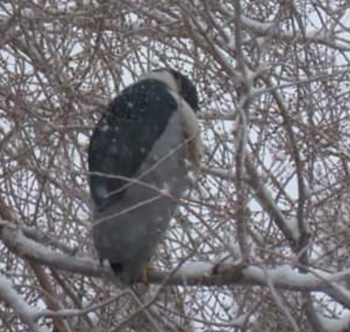 |
||
|
|
|||
| At the Payson Cemetery our cute little Western Screech is back, we also added Black-billed Magpies, Red-breasted Nuthatch, White-crowned Sparrows and a pair of Barn Owls. From there we decided to go after the Evening Grosbeaks and Red-naped Sapsucker at Evergreen Cemetery. The grosbeaks welcomed us with beautiful views right as we drove in. The Red-naped Sapsucker was down on the western edge in the pines, we also found a Lesser Goldfinch and Townsend's Solitaire. It ended up being a awesome day and so glad we went!! We happily surpassed challenge #1- First 20 species of 2020! |
|
||
